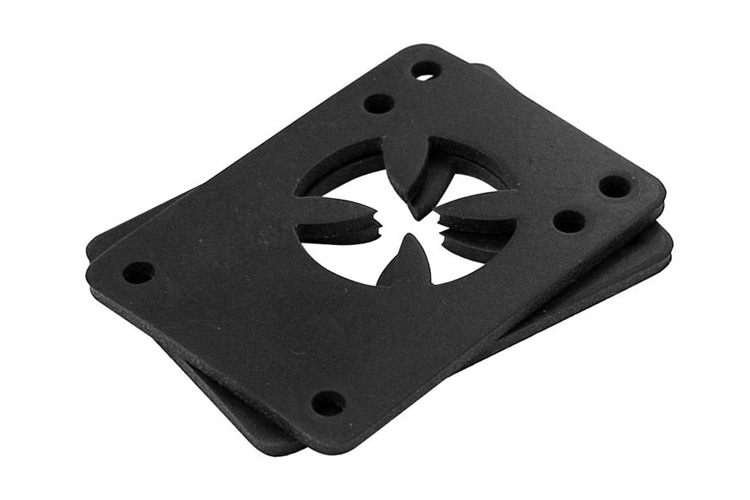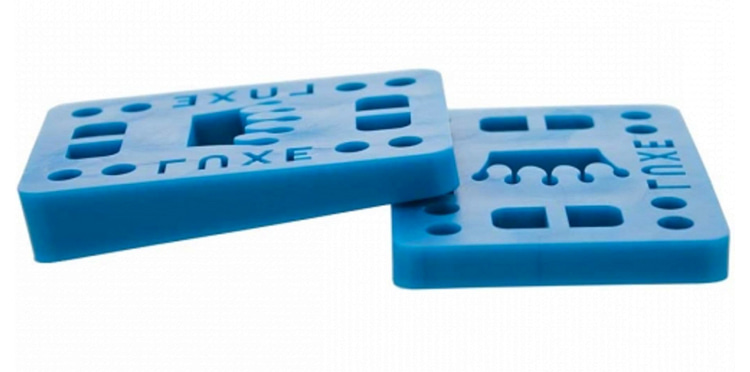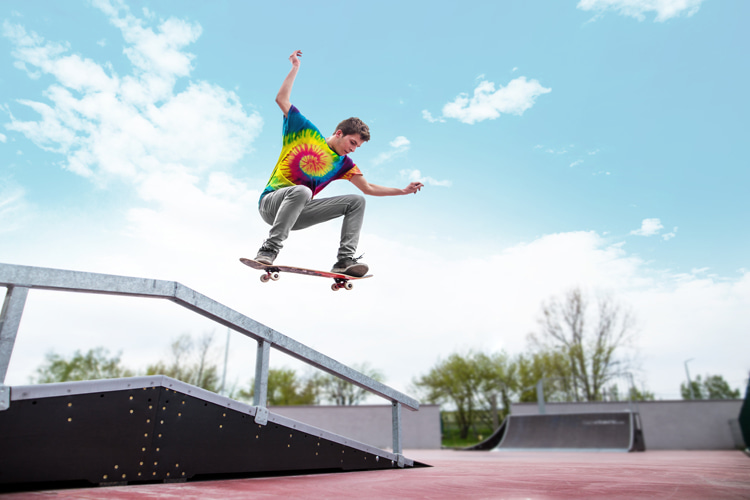Shock pads and riser pads are both rectangular-shaped skateboard accessories used to improve riding comfort and performance.
They are often used interchangeably, but there are subtle differences between them.
Shock pads are made of plastic, rubber, or foam and are designed to absorb the impact of hard landings and to help protect the board and the rider from damage.
Riser pads are made to raise the height of the deck and trucks, making the board more maneuverable and allowing for more aggressive riding.
Shock pads are beneficial because they provide cushioning and protection to skaters when they land hard on their board and help to reduce the impact of the fall.
They also help with the overall stability of the board, as the cushioning helps to minimize the effect of shock on the deck and hardware and prevent pressure cracks.
However, shock pads can also reduce the effectiveness of some tricks, as the cushioning reduces the contact between the skateboard and the ground.
Subtle Yet Relevant Differences
Riser pads, on the other hand, are designed to increase the gap between the trucks and the board.
This helps to give the board more maneuverability and stability, allowing for more aggressive riding.
Risers also help to reduce wheel bite, which is when the wheel comes in contact with the deck and causes the rider to lose control.
Nevertheless, risers can also add extra weight to the board, making it harder to maneuver.
If you're on a longboard using larger wheels, you may opt for riser pads because they need more height and distance from the deck.
For street skaters, it will also give them more pop for ollies.
Shock Pads: The Vibration Absorbers

Shock pads are relatively thin plastic or rubber sheets placed between the baseplate of a skateboard truck and the deck to absorb vibrations and reduce the risk of wheel bite.
Wheel bite is the effect skaters experience when the wheel gets caught on the lip of the deck, for instance, when making sharp turns.
Shock pads can also provide a smoother ride and better board control when landing tricks.
They are most commonly used in street skateboarding but can also be used in longboarding and other disciplines.
Shock pads can feature sharp or smooth edges and are typically made out of PVC, polyurethane, rubber, or a combination of all of them.
They come in various colors and thicknesses, allowing riders to choose the amount of cushioning they prefer for their deck.
The thicker the shock pad, the softer the ride, but this also increases the risk of wheel bite - and vice-versa.
When installing shock pads, it is essential to ensure they are centered on the baseplate and secured correctly to prevent them from shifting while riding.
It is also important to check that they are not too thick, as this could affect the turning and stability of the skateboard.
Shock pads are relatively inexpensive and easy to install and can greatly improve the overall riding experience.
Shock pads usually are 1/8" (3.2 mm) thick.
Riser Pads: The Wheel Bite Preventers

Riser pads - or angled riser pads - are shock absorbers on skateboards to provide a smoother ride and prevent wheel bite.
They are usually made from plastic or rubber and come in several shapes and sizes.
They are placed between the skateboard deck and the trucks to raise the board off the ground and to provide a cushion for the wheels to move over.
This helps to reduce vibration and shock from rough terrain and prevent wheel bite, which is when the wheel rubs against the deck and causes the board to stop abruptly.
Riser pads are also used to customize the look of the skateboard, as they come in various colors and styles.
They can also help adjust the skateboard wheelbase, allowing riders to customize their setup for different tricks.
Select the correct size risers for your skateboard by matching your trucks' width measurement to the risers' size.
Here's the chart for matching hardware (bolts) and (angled) risers:
- No Riser Pads - 7/8'' to 1'' Hardware;
- 1/8" Riser Pads - 1'' to 1 1/8'' Hardware;
- 1/4" Riser Pads - 1 1/4'' Hardware;
- 1/2" Riser Pads - 1 1/2'' Hardware;
Make sure that the risers are installed correctly and that they are securely fastened to the trucks.
Test your skateboard setup to ensure that the risers provide the desired clearance amount and allow the skateboard wheels to move freely.
